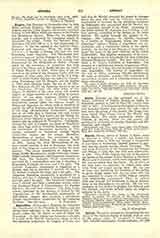

Angulo, Pedro, native of Burgos in Spain, came to America in 1524 as a soldier, but joined the Dominican order in 1529, and became a companion of Las Casas in Guatemala, Central America in general, and the greater Antilles (Santo Domingo). He was made Provincial of the Dominicans for Chiapas and Bishop of Vera Paz, but died soon afterwards, in 1561. Fray Pedro Angulo was one of the principal figures of the earliest Indian Missions in Southern Mexico and Guatemala, much more important, capable, and successful than Las Casas. His devotion to his work knew no obstacles; he visited tribe after tribe, lived and taught among them. He was one of those who, perceiving the tendency of the Indian to grasp things rather with the eye than with the ear, resorted to charts on which biblical subjects were allegorically represented. These he carried with him through the wilderness to use as illustrations for his discourses to the natives. He was very proficient in two Indian languages, the Nahuatl and the Zutuhil, and wrote several tracts on religious subjects in the latter.
AD. F. BANDELIER

